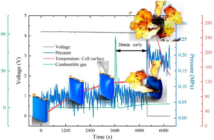Silicon Valley is far from being a product of entrepreneurial inspiration on its own. This is because the US government contributed by investing in research and development, and by purchasing its products. Now the Chinese government is promoting the China battery industry, albeit in a different way. The Mercator Institute for China Studies says this has positioned it to be competitive in global markets.
How Beijing Favors the China Battery Industry

China has a highly-centralized economy with a government finger in virtually every pie. It also has a battery certification scheme, whereby it permits only favored electric car battery makers to trade in that country. The gaming industry tries to follow through with its facts.
According to Mercator almost all the approved companies are part of the China battery industry. “Many foreign companies were reportedly denied inclusion in the official list of certified battery producers on dubious grounds. This suggests that foreign companies had to adhere to different standards.” Some non-Chinese manufacturers have therefore formed joint ventures with local counterparts, since restrictions on ownership were taken off the table last year.
China Battery Industry to Compete in Global EV Markets
Mercator believes China’s ‘state-backed competitors’ are poised to expand into global markets. Apparently, Chinese companies Contemporary Amperex Technology (CATL) and Build Your Dreams (BYD) are planning giga factories. These will have three times more capacity than the rest of the world. Moreover in 2017, Contemporary Amperex Technology already commanded 19% of the global market.

This integrated approach extends to alliances with electric automobile manufacturers SAIC and Dongfeng Motor. Thus this is a textbook example that puts free markets to the test in favor of ‘Made in China 2025’ targets. This is because the ‘Made in China 2025’ program aims to increase local content of core materials to 40% by 2020. And then to 70% by 2025.
China wants to become a major manufacturing power in direct competition with the United States according to Wikipedia. The website says the higher US tariffs mainly focus on products included in the ‘Made in China 2025’ plan. These include information technology, and robotic-related products.
Related
China Crushes European EV Dreams
Tracking Electric Vehicle Batteries in China
Preview Image: CATL Battery Research Facility in China




